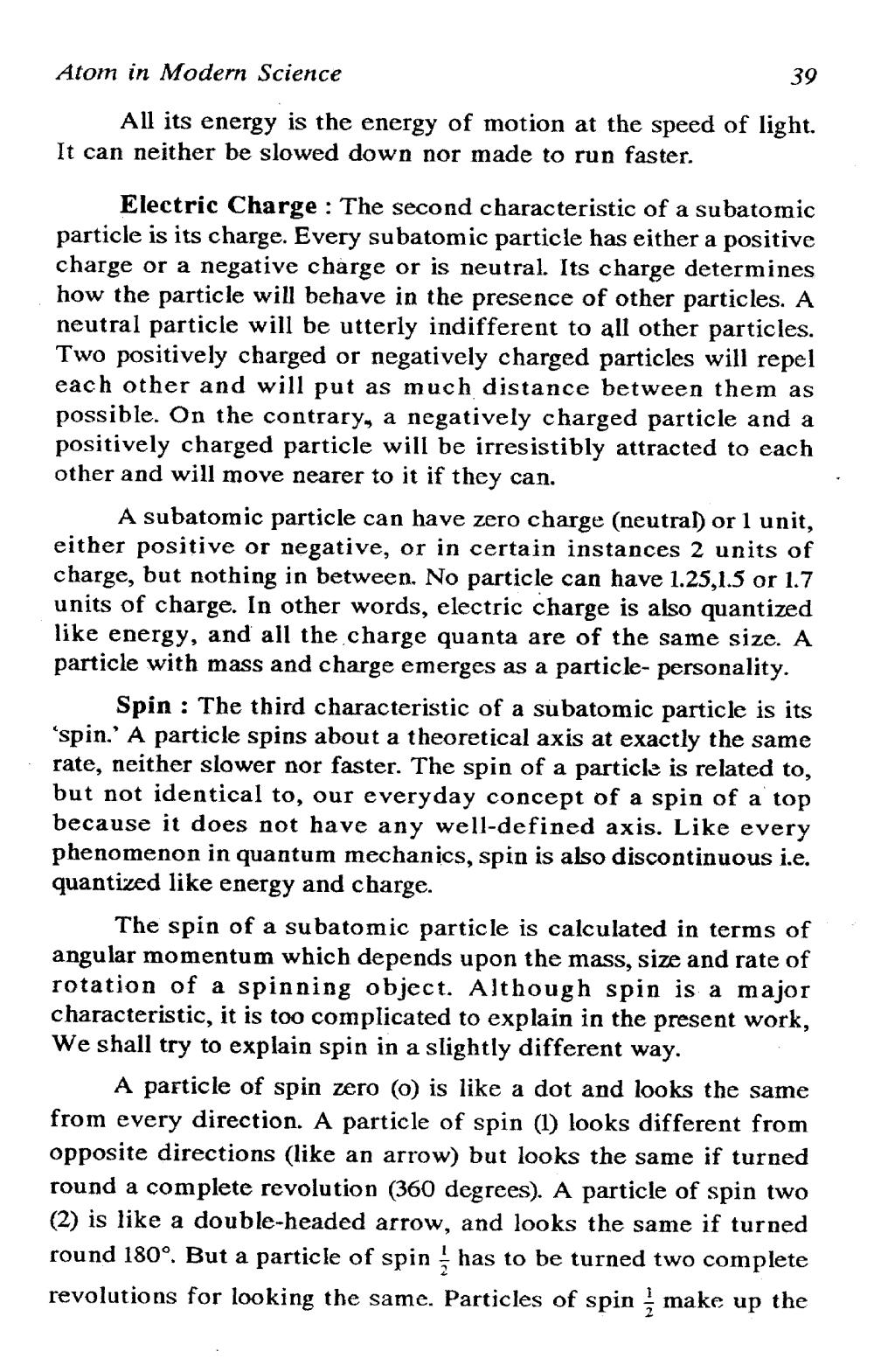________________
Atom in Modern Science
All its energy is the energy of motion at the speed of light. It can neither be slowed down nor made to run faster.
39
Electric Charge: The second characteristic of a subatomic particle is its charge. Every subatomic particle has either a positive charge or a negative charge or is neutral. Its charge determines how the particle will behave in the presence of other particles. A neutral particle will be utterly indifferent to all other particles. Two positively charged or negatively charged particles will repel each other and will put as much distance between them as possible. On the contrary, a negatively charged particle and a positively charged particle will be irresistibly attracted to each other and will move nearer to it if they can.
A subatomic particle can have zero charge (neutral) or 1 unit, either positive or negative, or in certain instances 2 units of charge, but nothing in between. No particle can have 1.25,1.5 or 1.7 units of charge. In other words, electric charge is also quantized like energy, and all the charge quanta are of the same size. A particle with mass and charge emerges as a particle- personality.
Spin: The third characteristic of a subatomic particle is its 'spin.' A particle spins about a theoretical axis at exactly the same rate, neither slower nor faster. The spin of a particle is related to, but not identical to, our everyday concept of a spin of a top because it does not have any well-defined axis. Like every phenomenon in quantum mechanics, spin is also discontinuous i.e. quantized like energy and charge.
The spin of a subatomic particle is calculated in terms of angular momentum which depends upon the mass, size and rate of rotation of a spinning object. Although spin is a major characteristic, it is too complicated to explain in the present work, We shall try to explain spin in a slightly different way.
A particle of spin zero (0) is like a dot and looks the same from every direction. A particle of spin (1) looks different from opposite directions (like an arrow) but looks the same if turned round a complete revolution (360 degrees). A particle of spin two (2) is like a double-headed arrow, and looks the same if turned round 180°. But a particle of spin has to be turned two complete 을 revolutions for looking the same. Particles of spin make up the




